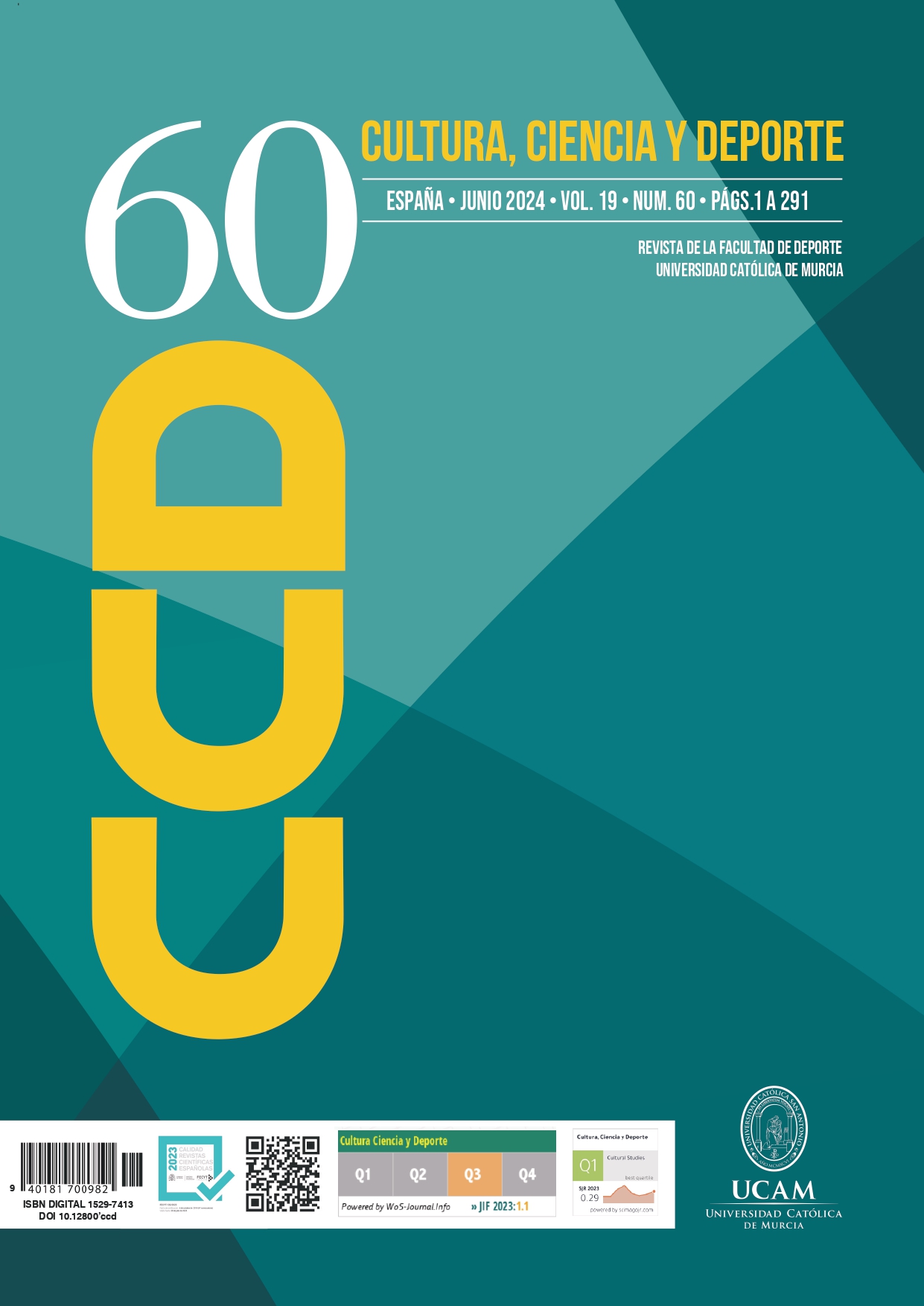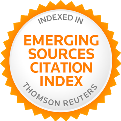Analysis of the user experience (ux) of A fitness App by gender
DOI:
https://doi.org/10.12800/ccd.v19i60.2098Abstract
Fitbe is a technological tool that facilitates the comprehensive management of sports spaces and helps users to practice physical activity. User experience is a key aspect to take into account when adopting the use of technological tools.
The general objective is to analyse the user experience of
sports centres with the Fitbe fitness app, as well as to examine the intention to use and exercise with the app in the future according to gender, age and level of education. A sample of 174 people (53 men and 121 women) was used.
The user experience questionnaire (UEQ) was used. The
results showed that pragmatic qualities had higher values
than hedonic qualities, with statistically significant differences according to gender and educational level. A cluster analysis identified three groups according to the level of intention to use the Fitbe tool. Developers of digital tools and applications should consider the user experience when designing such systems to improve the user experience.
References
Ahn, H., & Park, E. (2023). Motivations for user satisfaction of mobile fitness applications: an analysis of user experience based on online review comments. Humanities & Social Sciences Communications, 10(3), 1-7. https://doi.org/10.1057/s41599-022-01452-6
Al-Shamaileh, O., & Sutcliffe, A. (2023). Why people choose Apps: an evaluation of the ecology and user experience of mobile applications. International Journal of Human-Computer Studies, 170, 102965. https://doi.org/10.1016/j.ijhcs.2022.102965
Alturki, R., & Gay, V. (2017) Usability testing of fitness mobile application: case study aded surat app. International Journal of Computer Science & Information Technology, 9(5), 1-8. https://doi.org/10.5121/ijcsit.2017.9509
Angosto, S., García-Fernández, J., Valantine, I., & Grimaldi-Puyana, M. (2020). The intention to use fitness and physical activity apps: a systematic review. Sustainability, 12(16), 6641. https://doi.org/10.3390/su12166641
Angosto, S., Grimaldi-Puyana, M., & García-Fernández, J. (2023). A systematic review of intention to use fitness apps (2020–2023). Humanities & Social Sciences Communications, 10(512), 1-11. https://doi.org/10.1057/s41599-023-02011-3
Baretta, D., Perski, O., & Steca, P. (2019). Exploring users’ experiences of the uptake and adoption of physical activity apps: longitudinal qualitative study. JMIR mHealth and uHealth, 7(2), e11636. https://doi.org/10.2196/11636
Boy, G. A. (2017). The handbook of human-machine interaction: a human-centered design approach. CRC Press. Burger, G., Guna, J., & Pogačnik, M. (2018). Suitability of inexpensive eye-tracking device for user experience evaluations. Sensors, 18(6), 1822. https://doi.org/10.3390/s18061822
CMD SPORT (2021, 3 marzo). La pandemia impulsó la creación de 71.000 apps de salud y fitness en 2020. https://www.cmdsport.com/fitness/actualidad-fitness/la-pandemia-impulso-la-creacion-71-000-apps-salud-fitness-2020/
Davis, F. D. (1989). Perceived usefulness, perceived ease of use, and user acceptance of information technology. MIS Quarterly, 13(3), 318–339. https://doi.org/10.2307/249008
Deterding, S., Sicart, M., Nacke, L., O’Hara, K., & Dixon, D. (2011). Gamification. Using game-design elements in non-gaming contexts. CHI, 2425-2428. https://doi.org/10.1145/1979742.1979575
ISO (2019, julio). Ergonomics of human-system interaction - part 210: human-centred design for interactive systems. https://www.iso.org/standard/77520.html
Domínguez-Lara, S. (2018). Effect size, a quick guide. Educación Médica, 19(4), 251–254. https://doi.org/10.1016/j.edumed.2017.07.002
Published
How to Cite
Issue
Section
License
Copyright (c) 2024 Creative Commons Attribution License

This work is licensed under a Creative Commons Attribution-NonCommercial-ShareAlike 4.0 International License.
The authors who publish in this journal agree with the following terms:
- The authors retain the copyright and guarantee the journal the right to be the first publication of the work as well as licensed under a Creative Commons Attribution License that allows others to share the work with recognition of the authorship of the work and the initial publication in this journal.













